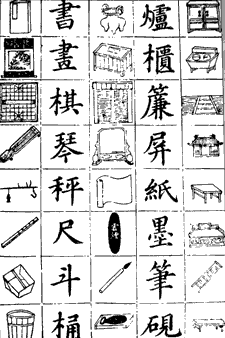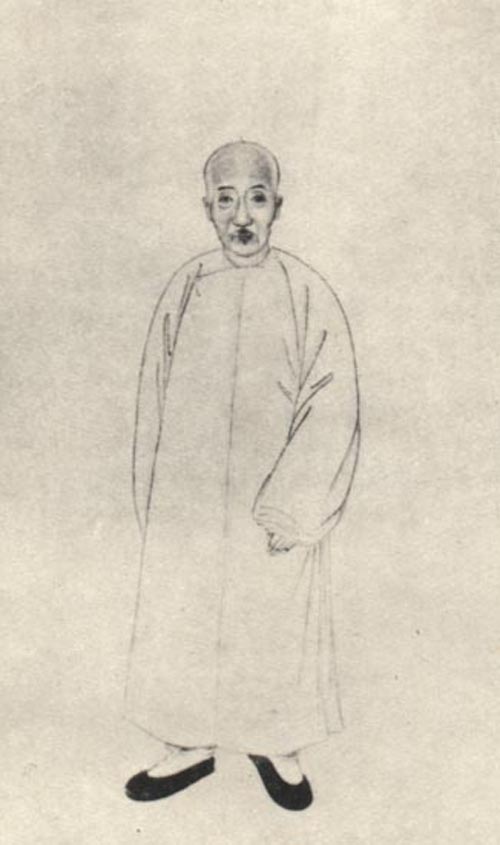|
Liding
''Liding'' (), sometimes ''lixie'' (), is the practice of rewriting ancient Chinese character forms in clerical or regular script. ''Liding'' is often used in Chinese textual studies. Definition and terminology During the Han dynasty, the clerical script reached its maturation, in which Chinese characters are written in such a way that is largely rectilinear and readily segmented into strokes. The script in current use, the regular script, inherited this feature. By comparison, the scripts in use prior to the maturation of the clerical script, including the various scripts from the time period spanning the Shang dynasty, the Zhou dynasty, the Warring States era and the Qin dynasty, employed more sinuous lines, less stable shapes, and more ambiguous stroke segmentations. This remarkable difference in style, combined with the fact that the graphic structures of the characters have changed significantly over time, creates difficulty for recognization and analysis of the char ... [...More Info...] [...Related Items...] OR: [Wikipedia] [Google] [Baidu] |
Chinese Characters
Chinese characters () are logograms developed for the writing of Chinese. In addition, they have been adapted to write other East Asian languages, and remain a key component of the Japanese writing system where they are known as '' kanji''. Chinese characters in South Korea, which are known as '' hanja'', retain significant use in Korean academia to study its documents, history, literature and records. Vietnam once used the ''chữ Hán'' and developed chữ Nôm to write Vietnamese before turning to a romanized alphabet. Chinese characters are the oldest continuously used system of writing in the world. By virtue of their widespread current use throughout East Asia and Southeast Asia, as well as their profound historic use throughout the Sinosphere, Chinese characters are among the most widely adopted writing systems in the world by number of users. The total number of Chinese characters ever to appear in a dictionary is in the tens of thousands, though most are g ... [...More Info...] [...Related Items...] OR: [Wikipedia] [Google] [Baidu] |
Radical 162
Radical 162 or radical walk () meaning "walk" is one of the 20 Kangxi radicals (214 radicals in total) composed of 7 strokes. When used as a component, this radical character transforms into ⻍, ⻌, or ⻎ (See #Variant forms). In the ''Kangxi Dictionary'', there are 381 characters (out of 49,030) to be found under this radical. (3 strokes), the component form of , is also the 49th indexing component in the ''Table of Indexing Chinese Character Components'' predominantly adopted by Simplified Chinese dictionaries published in mainland China, with listed as its associated indexing component. Evolution File:辵-seal.svg, Small seal script character Derived characters Variant forms This radical character has different forms in different languages. Traditionally, this radical character is printed with two dots, while in written regular script, only the one-dot form is used. In post-war Japan, with the reform of the national language (Japanese language), the ''tōyō ... [...More Info...] [...Related Items...] OR: [Wikipedia] [Google] [Baidu] |
Da Ke Ding
The Da Ke ''ding'' () is an ancient Chinese bronze circular ''ding'' vessel from the Western Zhou dynasty (1046–771 BC). Unearthed in Famen Town, Fufeng County, Shaanxi in 1890, it is on display in the Shanghai Museum. The Da Ke ''ding'', the Da Yu ''ding'' in the National Museum of China, and the Mao Gong ''ding'' in the National Palace Museum in Taipei have been called the "Three Treasures of China" (). Description The tripod is round, with three legs and two ears, a common shape during the Western Zhou dynasty (1046–771 BC). It is high and weights . Its inside diameter is with a bore of . Its mouth was engraved with ''Taotie'' patterns and its abdomen was engraved with wave patterns, and its ears was engraved with Chinese dragon patterns. Inscription The tripod has 290 Chinese characters in 28 lines inside the tripod. The inscriptions recorded that the monarch of the Western Zhou dynasty awarded slaves and land to the nobleman, Ke (). Ke cast it to commemor ... [...More Info...] [...Related Items...] OR: [Wikipedia] [Google] [Baidu] |
Guodian Chu Slips
The Guodian Chu Slips () were unearthed in 1993 in Tomb no. 1 of the Guodian tombs in Jingmen, Hubei Province and dated to the latter half of the Warring States period. The tomb is located in the Jishan District's tomb complex, near the Jingmen City in the village of Guodian, and only nine kilometers north of Ying, which was the ancient Chu capital from about 676 BC until 278 BC, before the State of Chu was overrun by Qin. The tomb and its contents were studied to determine the identity of the occupant; an elderly noble scholar, and teacher to a royal prince. The prince had been identified as Crown Prince Heng, who later became King Qingxiang of Chu. Since King Qingxiang was the Chu king when Qin sacked their old capital Ying in 278 BC, the Chu slips are dated to around 300 BC. Content There are in total about 804 bamboo slips in this cache, including 702 strips and 27 broken strips. The bamboo slip texts consist of three major categories, which include the earliest manuscript ... [...More Info...] [...Related Items...] OR: [Wikipedia] [Google] [Baidu] |


